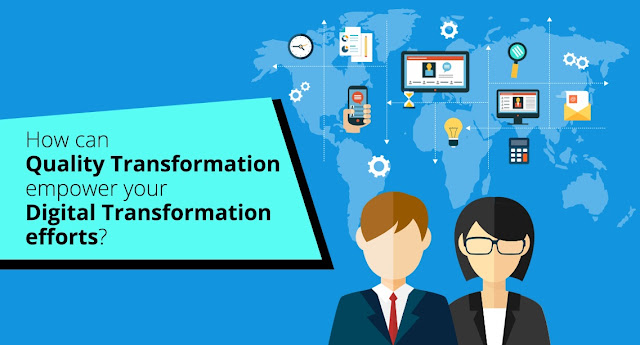How has Software Quality Assurance fared in terms of its fundamentals?
The changing dynamics of online business, or more precisely the digital world, has necessitated the transformation of software development, testing and deployment processes. The requirements of online business have moved from merely dishing out different types of software and their variants to providing a rich customer experience. The latter has led to a renewed focus on software quality assurance. Furthermore, The advent of new technologies like Artificial Intelligence, Internet of Things (IoT), blockchain, cloud computing, big data and predictive analysis among others requires a software to work seamlessly on various device platforms, frameworks, operating systems, and networks. And unless a thorough QA software testing exercise is performed on the software, its seamless functioning across environments becomes a challenge.
Traditional
QA giving way to Agile and DevOps
The growing
complexity of software technology has rendered the traditional approach of
software quality assurance woefully inadequate. Consequently, the traditional
waterfall model of development has given way to Agile and DevOps. Agile,
notwithstanding its myriad advantages, has dissolved the difference between
development and testing. In fact, the two have been merged to work concurrently
as part of the development sprint to achieve a quick release schedule and
better quality of software. Now, with customer experience underpinning the
development, testing and deployment processes of a software, Agile has further
given way to DevOps.
According
to DevOps, software quality assurance testing is a continuous process that runs
throughout the lifecycle of a product. It requires both the development (read
development and testing) and operations teams to work in cohesion and not in
respective silos. The demands of achieving software quality to offset the
challenges of competition have meant creating a total quality culture in the
organization with every stakeholder across processes being made accountable.
Do the
above mentioned developments in executing software quality assurance reflect
any change in the QA fundamentals? The answer is a resounding yes! Let us find
out the areas encompassing such changes.
#Test
Automation: Since
digital transformation has necessitated a rapid turnaround of product releases,
the software testing services need to be quick in validating the quality of
software. Moreover, as manual testing falls short in identifying glitches
across the spectrum besides taking an inordinately long time, test automation
has taken center stage. Earlier, manual testers used to report glitches to
their test leads, who, after a thorough analysis, would have passed the same to
the development team for correction. The present day test automation is fast,
secure, and robust. The QA person of today is an integral part of the
development sprint who tests the codes on various parameters and against a
number of dependencies. Besides, since test automation can cover the entire
range of a test environment, it is far more superior and faster to the manual
testing process.
#Use of
Artificial Intelligence: The
powerful AI tools can facilitate software quality assurance testing by
writing test automation codes, sorting out the relevant areas of testing by
examining a large number of files, and predicting glitches. Thus, the use of AI
can speed things up and prevent cost escalation. Moreover, the AI-based system
can correctly predict and identify the source of glitches thereby helping
developers to build a glitch free software. AI can validate the quality of a
software at various stages of its development as well as integrate its various
components quickly. It can ensure the functionality, security, usability and
performance of an application in the quickest possible manner. AI can bring
down the requirement of manual testers to a trickle. These QA testers can thus
be freed of their traditional roles and deployed in high priority areas.
#DevSecOps:
With security
becoming a high priority area for software testing given the growing threat of
cybercrime, security has been made an integral part of the DevOps ecosystem. If
DevOps calls for the creation of a total quality culture among the stakeholders,
DevSecOps goes a step further. It requires security to be a part of the
development sprint. So, apart from testing the software for glitches, DevSecOps
checks for the vulnerable areas in a software and plugs them.
Conclusion
The
software quality assurance services are undergoing changes to address the
complexities and demands of software development, testing and deployment in the
Agile-DevOps ecosystem. The fundamentals are indeed changing as QA ceases to be
a distinct department and instead, become integral part of DevOps.
This
Article is originally published at Medium.com, Are
the fundamentals of Software Quality Assurance changing?



Comments
Post a Comment